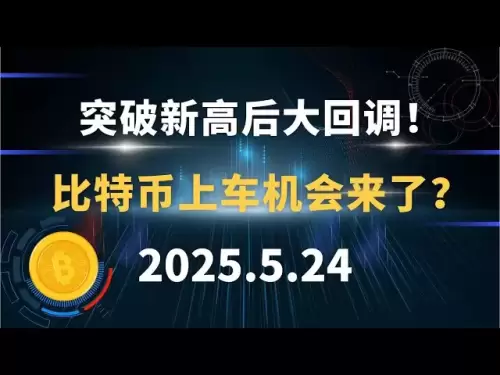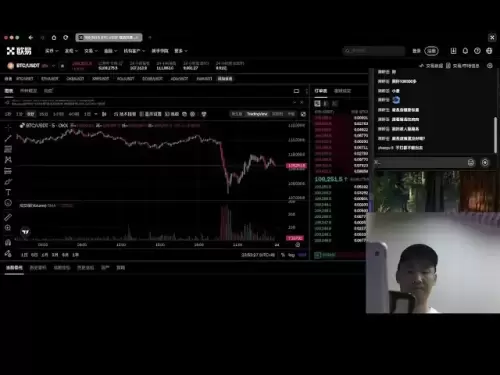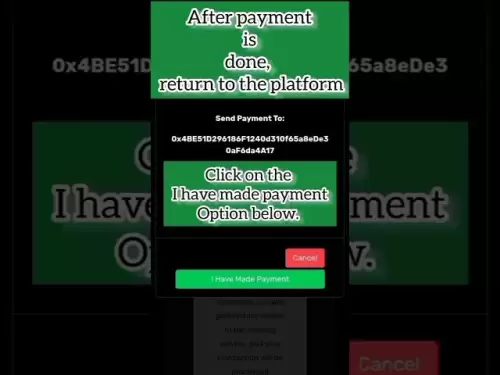-
 Bitcoin
Bitcoin $108,837.9859
0.53% -
 Ethereum
Ethereum $2,561.0083
0.44% -
 Tether USDt
Tether USDt $1.0001
0.01% -
 XRP
XRP $2.3512
0.11% -
 BNB
BNB $675.8361
1.62% -
 Solana
Solana $176.6541
-0.07% -
 USDC
USDC $0.9999
-0.01% -
 Dogecoin
Dogecoin $0.2285
-1.67% -
 Cardano
Cardano $0.7597
-1.75% -
 TRON
TRON $0.2721
2.26% -
 Sui
Sui $3.6667
1.28% -
 Hyperliquid
Hyperliquid $34.9892
-0.09% -
 Chainlink
Chainlink $15.7391
-2.24% -
 Avalanche
Avalanche $23.1997
-4.33% -
 Stellar
Stellar $0.2897
0.00% -
 Shiba Inu
Shiba Inu $0.0...01445
-1.90% -
 Bitcoin Cash
Bitcoin Cash $428.2634
-1.00% -
 UNUS SED LEO
UNUS SED LEO $8.8092
0.25% -
 Hedera
Hedera $0.1911
-2.79% -
 Toncoin
Toncoin $2.9992
-0.72% -
 Monero
Monero $401.1171
2.35% -
 Litecoin
Litecoin $97.0784
-0.36% -
 Polkadot
Polkadot $4.5970
-1.91% -
 Bitget Token
Bitget Token $5.4757
-1.36% -
 Pepe
Pepe $0.0...01401
-4.10% -
 Pi
Pi $0.7712
1.62% -
 Dai
Dai $0.9999
0.00% -
 Ethena USDe
Ethena USDe $1.0006
0.04% -
 Aave
Aave $266.5351
7.15% -
 Uniswap
Uniswap $6.2531
2.58%
How to use KDJ on the time-sharing chart? What should be paid attention to in short-term operations?
Use KDJ on time-sharing charts for short-term crypto trades; K line crossing D from below 20 signals entry, above 80 suggests exit. Combine with RSI for robust signals.
May 24, 2025 at 11:14 am
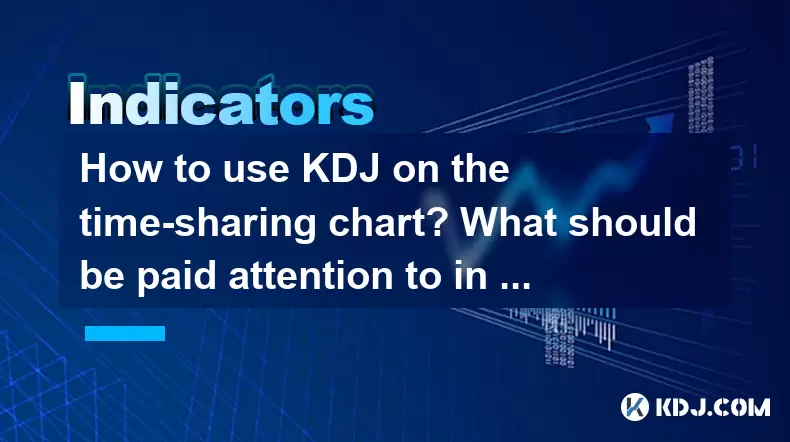
Introduction to KDJ Indicator
The KDJ indicator is a popular technical analysis tool used in the cryptocurrency market to gauge momentum and potential reversal points. It is particularly useful for traders who focus on short-term operations and time-sharing charts. The KDJ indicator consists of three lines: K, D, and J. The K and D lines are calculated based on the highest high and lowest low of a specified period, while the J line is a more sensitive indicator that oscillates around the K and D lines. Understanding how to effectively use the KDJ on time-sharing charts can significantly enhance your trading strategies.
Setting Up KDJ on Time-Sharing Charts
To begin using the KDJ indicator on a time-sharing chart, you will need to follow these steps:
- Select your trading platform: Ensure that your chosen cryptocurrency trading platform supports the KDJ indicator and time-sharing charts. Popular platforms like Binance, Coinbase, and TradingView typically offer these features.
- Access the chart settings: Navigate to the chart settings or indicators menu. This is usually found by clicking on the chart and selecting "Indicators" or a similar option.
- Add the KDJ indicator: Search for "KDJ" in the indicator list and add it to your chart. You may need to customize the settings, such as the period length, to suit your trading style.
- Adjust the time frame: Set the chart to display a time-sharing view, which typically shows price movements in smaller intervals like minutes or seconds.
Interpreting KDJ Signals on Time-Sharing Charts
Once the KDJ indicator is set up on your time-sharing chart, you need to understand how to interpret its signals. The KDJ lines provide insights into overbought and oversold conditions, which are crucial for short-term trading:
- Overbought and Oversold Levels: The KDJ indicator typically uses levels of 80 and 20 to indicate overbought and oversold conditions, respectively. When the K line crosses above 80, it suggests that the asset may be overbought, and a price correction could be imminent. Conversely, when the K line crosses below 20, it indicates an oversold condition, suggesting a potential price rebound.
- Golden Cross and Death Cross: A golden cross occurs when the K line crosses above the D line, signaling a potential bullish trend. Conversely, a death cross happens when the K line crosses below the D line, indicating a potential bearish trend. These crossovers are particularly useful for identifying entry and exit points on time-sharing charts.
- J Line Divergence: The J line is more sensitive and can provide early signals of trend reversals. If the J line diverges from the price action (i.e., the price continues to rise while the J line falls, or vice versa), it may indicate a weakening trend and a potential reversal.
Applying KDJ for Short-Term Operations
Using the KDJ indicator for short-term operations requires a keen eye for detail and a disciplined approach. Here are some strategies to consider:
- Quick Entry and Exit: Given the fast-paced nature of time-sharing charts, use the KDJ indicator to identify quick entry and exit points. For example, if the K line crosses above the D line from below 20, it may be a good entry point for a short-term bullish trade. Similarly, if the K line crosses below the D line from above 80, consider exiting a long position or entering a short position.
- Confirmation with Other Indicators: While the KDJ can be powerful on its own, combining it with other indicators like the RSI or MACD can provide more robust signals. For instance, if the KDJ indicates an overbought condition and the RSI also shows overbought levels, the signal is more reliable.
- Volume Analysis: Pay attention to trading volume alongside KDJ signals. A high volume during a KDJ golden cross can confirm the strength of the bullish trend, while low volume during a death cross may suggest a weak bearish trend.
Key Considerations for Short-Term Operations
When engaging in short-term operations using the KDJ indicator on time-sharing charts, several factors need to be considered to maximize your trading success:
- Volatility and Risk Management: Short-term trading, especially on time-sharing charts, can be highly volatile. Implement strict risk management rules, such as setting stop-loss orders and only risking a small percentage of your trading capital on each trade.
- Market Conditions: The effectiveness of the KDJ indicator can vary depending on market conditions. During strong trends, the KDJ may generate false signals, so it's crucial to understand the broader market context before making trading decisions.
- Time Frame Sensitivity: The KDJ settings need to be adjusted based on the time frame you are trading. Shorter time frames may require more sensitive settings, while longer time frames might benefit from less sensitive settings to filter out noise.
Practical Example of KDJ on Time-Sharing Chart
To illustrate how the KDJ indicator works on a time-sharing chart, let's consider a practical example:
- Scenario: You are trading Bitcoin on a 5-minute time-sharing chart. The KDJ indicator is set with default parameters (9, 3, 3).
- Observation: You notice that the K line crosses above the D line from below 20, indicating a potential bullish trend. The J line also shows a positive divergence from the recent price action.
- Action: Based on these signals, you decide to enter a long position on Bitcoin. You set a stop-loss order just below the recent low to manage risk.
- Outcome: The price of Bitcoin rises as expected, and you exit the position when the K line crosses above 80, signaling an overbought condition.
Frequently Asked Questions
Q1: Can the KDJ indicator be used effectively on all cryptocurrencies?
A1: While the KDJ indicator can be applied to any cryptocurrency, its effectiveness may vary depending on the liquidity and volatility of the specific asset. Highly liquid cryptocurrencies like Bitcoin and Ethereum tend to provide more reliable signals, whereas less liquid assets may produce more false signals.
Q2: How often should I adjust the KDJ settings for short-term trading?
A2: The frequency of adjusting KDJ settings depends on your trading strategy and the market conditions. For short-term trading on time-sharing charts, you might need to adjust the settings more frequently to adapt to rapid price movements. However, frequent adjustments can lead to over-optimization, so it's important to find a balance.
Q3: Is the KDJ indicator more effective on shorter or longer time frames?
A3: The KDJ indicator can be effective on both shorter and longer time frames, but its sensitivity needs to be adjusted accordingly. On shorter time frames, like time-sharing charts, more sensitive settings are typically used to capture quick price movements. On longer time frames, less sensitive settings help filter out noise and focus on more significant trends.
Q4: How can I combine the KDJ indicator with other technical analysis tools?
A4: Combining the KDJ indicator with other tools like the RSI, MACD, or moving averages can enhance your trading strategy. For instance, using the RSI to confirm overbought or oversold conditions signaled by the KDJ can increase the reliability of your trades. Similarly, using moving averages to identify the overall trend can help you align your KDJ signals with the broader market direction.
Disclaimer:info@kdj.com
The information provided is not trading advice. kdj.com does not assume any responsibility for any investments made based on the information provided in this article. Cryptocurrencies are highly volatile and it is highly recommended that you invest with caution after thorough research!
If you believe that the content used on this website infringes your copyright, please contact us immediately (info@kdj.com) and we will delete it promptly.
- Bitcoin Solaris (BTC-S) Promises to Be the Most Promising Wealth Vehicle Since Ethereum's Launch
- 2025-05-24 22:00:52
- If History Repeats Bitcoin Could be on the Verge of its Strongest Growth Cycle Yet
- 2025-05-24 22:00:52
- Justin Sun's White House Visit and TrumpCoin Stake
- 2025-05-24 21:55:12
- Lightchain AI (LCAI) Bonus Round Is Now Live, Offering Last Chance to Secure Tokens at Presale Rate of $0.007125
- 2025-05-24 21:55:12
- Is Solana’s Layer 2 Really a Game Changer?
- 2025-05-24 21:50:14
- The Real World Asset (RWA) Tokenization Sector is Heating Up as TokenFi Officially Launches Its Platform
- 2025-05-24 21:50:14
Related knowledge
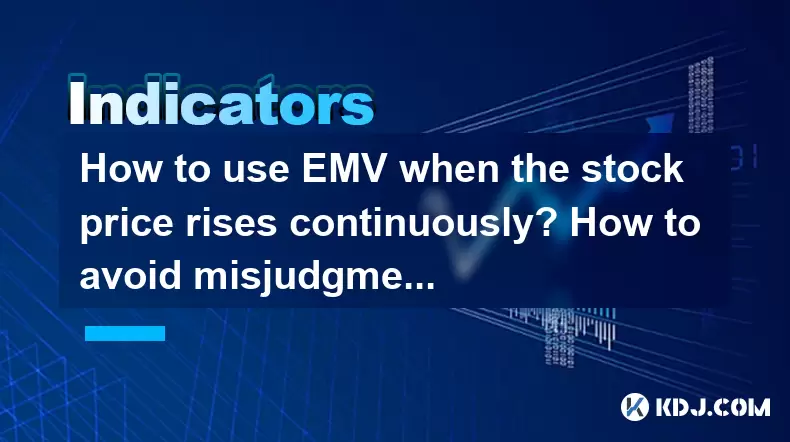
How to use EMV when the stock price rises continuously? How to avoid misjudgment in extreme market conditions?
May 23,2025 at 07:29pm
In the dynamic world of cryptocurrency trading, the Exponential Moving Average (EMA) is a powerful tool that traders use to make informed decisions, especially during periods of continuous stock price rises. Understanding how to effectively use EMAs and avoiding misjudgment in extreme market conditions are crucial skills for any crypto trader. This arti...
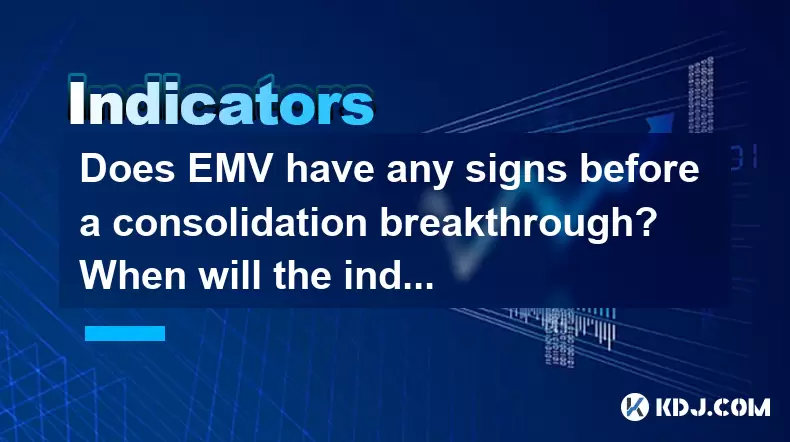
Does EMV have any signs before a consolidation breakthrough? When will the indicator give an early warning?
May 23,2025 at 06:42pm
Does EMV have any signs before a consolidation breakthrough? When will the indicator give an early warning? The Ease of Movement Value (EMV) is a technical indicator that helps traders understand the relationship between price and volume in the cryptocurrency market. It is particularly useful for identifying potential breakouts from consolidation period...
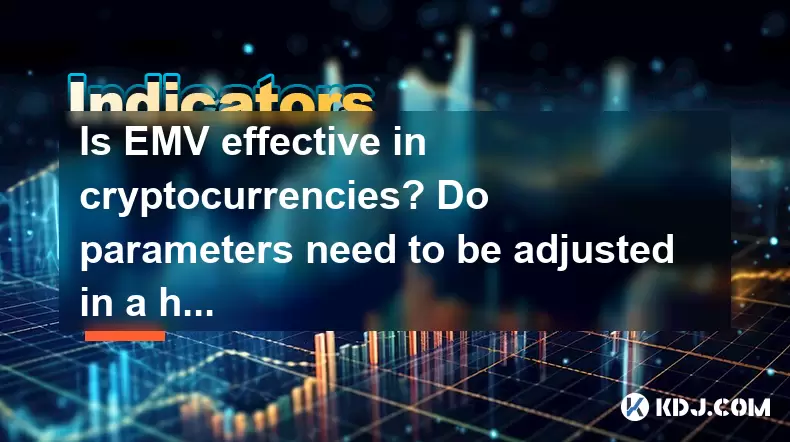
Is EMV effective in cryptocurrencies? Do parameters need to be adjusted in a high volatility environment?
May 24,2025 at 01:49am
Is EMV effective in cryptocurrencies? Do parameters need to be adjusted in a high volatility environment? EMV, or Ease of Movement Value, is a technical indicator that measures the relationship between price changes and volume. Originally developed for traditional financial markets, its application in the cryptocurrency space raises several questions ab...
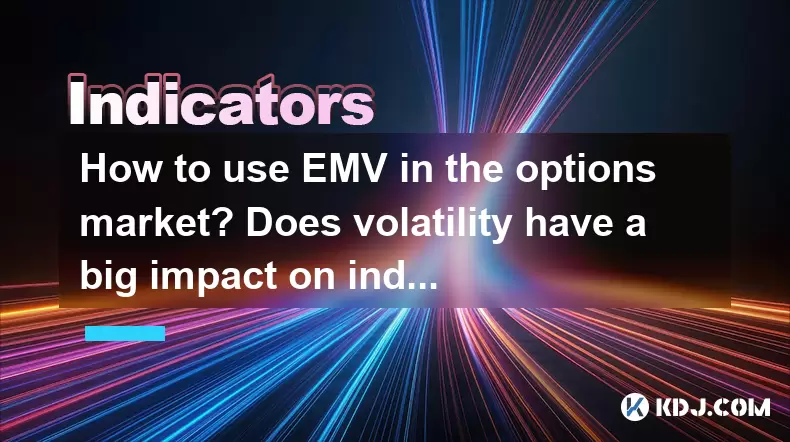
How to use EMV in the options market? Does volatility have a big impact on indicators?
May 24,2025 at 07:28am
How to Use EMV in the Options Market? Does Volatility Have a Big Impact on Indicators? The Ease of Movement Value (EMV) is a technical indicator that helps traders understand the relationship between price and volume, and it can be particularly useful in the options market. In this article, we will explore how to use EMV in the options market and examin...
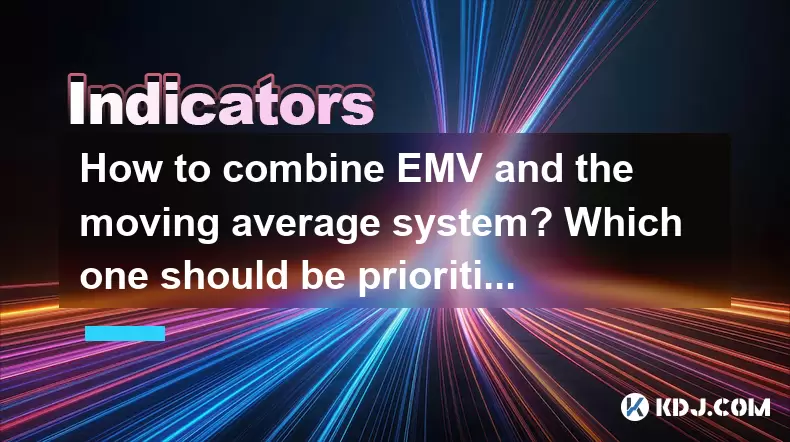
How to combine EMV and the moving average system? Which one should be prioritized when the golden cross and the dead cross appear at the same time?
May 24,2025 at 07:21pm
The combination of the Exponential Moving Average (EMA) and the moving average system is a popular strategy among cryptocurrency traders to identify potential trends and make informed trading decisions. This article will delve into how to effectively combine these tools, and what to do when the golden cross and the dead cross appear simultaneously. Unde...
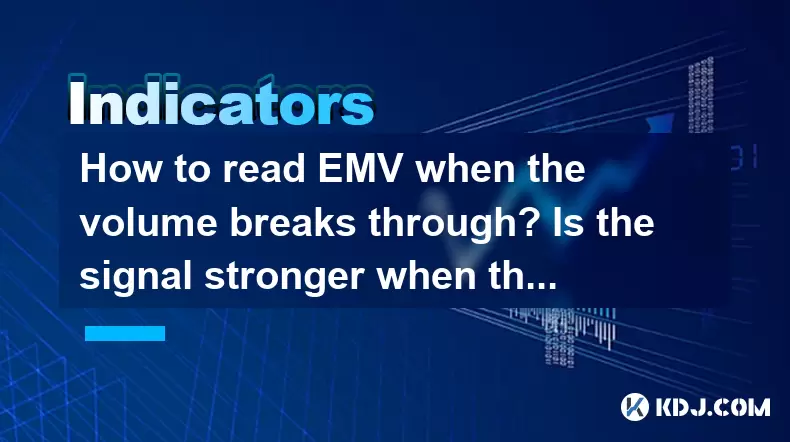
How to read EMV when the volume breaks through? Is the signal stronger when the volume and price cooperate?
May 24,2025 at 02:14pm
Understanding how to read EMV (Ease of Movement) when volume breaks through and assessing the strength of signals when volume and price cooperate are crucial skills for cryptocurrency traders. This article will delve into these topics, providing detailed insights and practical guidance. What is EMV and Its Importance in Cryptocurrency Trading?EMV, or Ea...

How to use EMV when the stock price rises continuously? How to avoid misjudgment in extreme market conditions?
May 23,2025 at 07:29pm
In the dynamic world of cryptocurrency trading, the Exponential Moving Average (EMA) is a powerful tool that traders use to make informed decisions, especially during periods of continuous stock price rises. Understanding how to effectively use EMAs and avoiding misjudgment in extreme market conditions are crucial skills for any crypto trader. This arti...

Does EMV have any signs before a consolidation breakthrough? When will the indicator give an early warning?
May 23,2025 at 06:42pm
Does EMV have any signs before a consolidation breakthrough? When will the indicator give an early warning? The Ease of Movement Value (EMV) is a technical indicator that helps traders understand the relationship between price and volume in the cryptocurrency market. It is particularly useful for identifying potential breakouts from consolidation period...

Is EMV effective in cryptocurrencies? Do parameters need to be adjusted in a high volatility environment?
May 24,2025 at 01:49am
Is EMV effective in cryptocurrencies? Do parameters need to be adjusted in a high volatility environment? EMV, or Ease of Movement Value, is a technical indicator that measures the relationship between price changes and volume. Originally developed for traditional financial markets, its application in the cryptocurrency space raises several questions ab...

How to use EMV in the options market? Does volatility have a big impact on indicators?
May 24,2025 at 07:28am
How to Use EMV in the Options Market? Does Volatility Have a Big Impact on Indicators? The Ease of Movement Value (EMV) is a technical indicator that helps traders understand the relationship between price and volume, and it can be particularly useful in the options market. In this article, we will explore how to use EMV in the options market and examin...

How to combine EMV and the moving average system? Which one should be prioritized when the golden cross and the dead cross appear at the same time?
May 24,2025 at 07:21pm
The combination of the Exponential Moving Average (EMA) and the moving average system is a popular strategy among cryptocurrency traders to identify potential trends and make informed trading decisions. This article will delve into how to effectively combine these tools, and what to do when the golden cross and the dead cross appear simultaneously. Unde...

How to read EMV when the volume breaks through? Is the signal stronger when the volume and price cooperate?
May 24,2025 at 02:14pm
Understanding how to read EMV (Ease of Movement) when volume breaks through and assessing the strength of signals when volume and price cooperate are crucial skills for cryptocurrency traders. This article will delve into these topics, providing detailed insights and practical guidance. What is EMV and Its Importance in Cryptocurrency Trading?EMV, or Ea...
See all articles




















